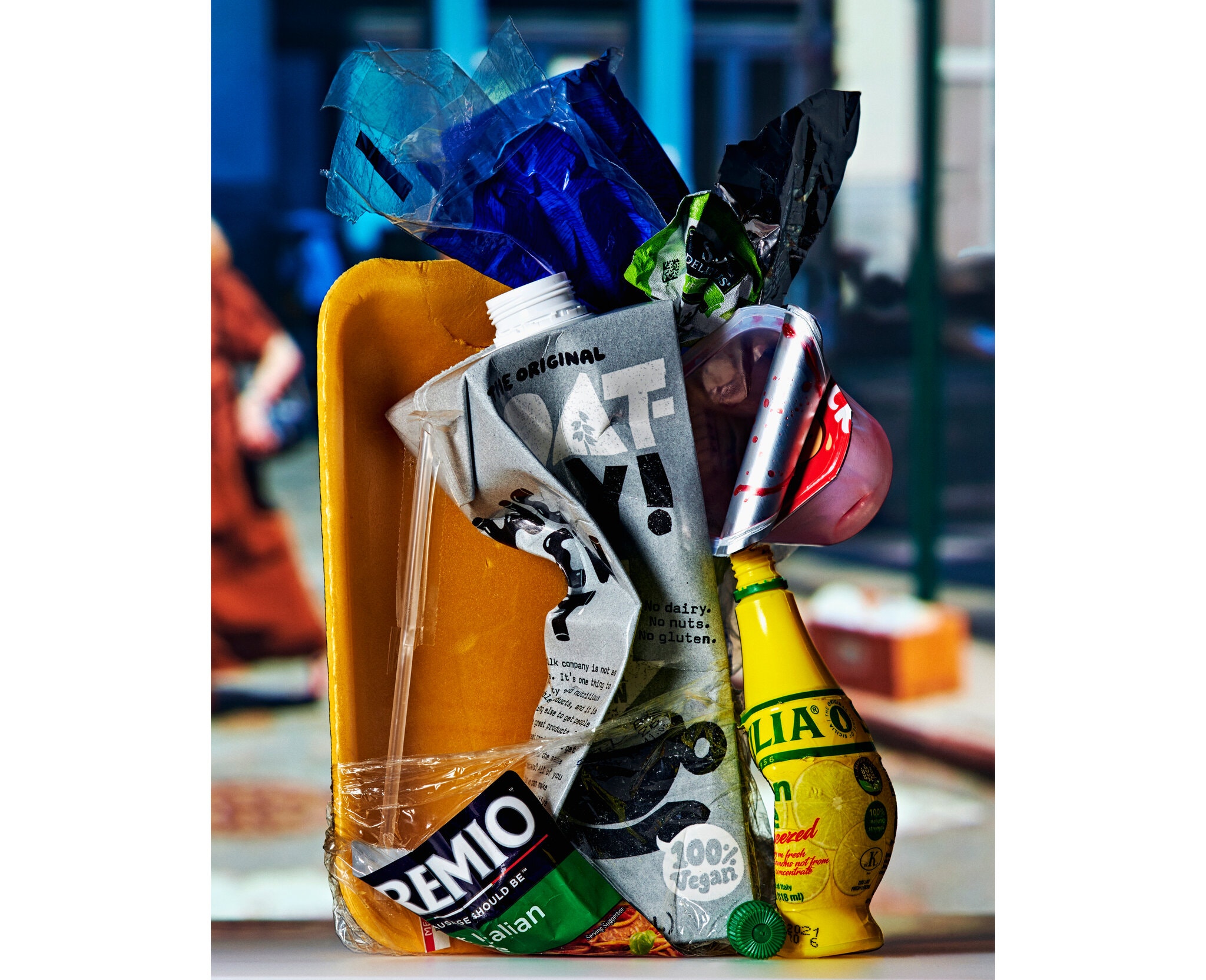

The recycling business in America is in a heap of trouble. The environmental and economic ripple effects on towns and cities are ominous.
China used to take our recyclables but essentially shut its doors in 2018 because the paper and plastics we shipped were too contaminated with garbage. Unsurprisingly, the United States leads the world in per capita municipal solid waste production, and the volume of single-use plastics, rising for decades, has soared since the start of the pandemic.
The closing of the Chinese market has caused America’s recycling business to tank — too much supply, too little demand. In Onondaga County, New York, for example, where collecting, processing and marketing recyclables had long paid for itself, even occasionally earning money, county residents forked over about $2 million in 2020 to cover recycling costs. Dozens of recycling programs have shuttered across the country and Americans are piling more trash than ever into incinerators and landfills, the equivalent of throwing up our collective hands, a trend that disproportionately impacts marginalized neighborhoods and communities of color.
But there’s a way to clean up this mess.
A couple of New York State legislators, Democrats from Long Island, Senator Todd Kaminsky and Assemblyman Steve Englebright, have drafted a recycling bill that, if enacted, would set a conspicuous precedent for other states.
The bill is designed to get money flowing back into New York’s recycling programs, with the prospect of upgrading trash-sorting technology and creating green jobs. It also provides incentives for consumer brand owners to use more recyclable materials and reduce their packaging overall.
For anybody concerned about keeping our communities from opening more sites to burn or bury rubbish and hemorrhaging cash to contend with, say, nonrecyclable plastic food containers, milk jugs and yogurt cups — cash that could go toward building new libraries or hospitals or parks — the legislation is a potential game changer.
And it wouldn’t cost New York taxpayers a dime. The opposite: it would return millions of tax dollars now paying for recycling to municipal coffers.
Instead, the law would get product manufacturers, all but the smallest, to pick up the recycling tab. The prospective legislation, in the works for more than a year, has not only what officials and others I spoke with say are reasonable odds of passing in Albany — it has a good chance of earning support from some of those same companies and their lobbyists.
Why? For certain businesses, it’s the right thing to do and on brand. Nespresso, the upscale coffee maker, recently reached out to Sims Recycling, whose facilities process most of New York City’s recyclables, volunteering to pay for the equipment Sims would need to extract aluminum from its coffee pods, and arranging with the New York City Department of Sanitation for the pods to be included in curbside pickup.
For others in the packaging industry, including some who have opposed such legislation before but now see states like California, Indiana, Massachusetts, Maine and Oregon considering similar bills, getting behind the idea — and therefore a seat at the table to help work out the details — is better than being left out of the process and holding the bag. The lobby group Ameripen, for instance, has lately suggested it is open to the idea.
We’re talking about more than some obscure state recycling bill, in other words. We’re talking about the glimmer of a cultural reset, a shift in how Americans view corporate and individual responsibility.
The New York bill would implement a concept called extended producer responsibility, an incredibly infelicitous recycling term. In essence, E.P.R. compels manufacturers, not consumers, to pay for the end-waste their products produce.
Depending on the environmental impacts of their packaging materials, E.P.R. requires manufacturers to pony up different amounts that municipalities can then use to offset recycling expenses. Right now, companies pretty much do what they wish when it comes to packaging, slapping, say, a metalized plastic label on a recyclable cosmetics bottle and making it nonrecyclable, or swapping plastic foam for pulped-paper egg cartons — with taxpayers having to absorb higher disposal costs.
READ MORE: https://www.nytimes.com/2021/01/27/arts/design/recycling-packaging-new-y...
- Published Jan. 27, 2021Updated Jan. 28, 2021